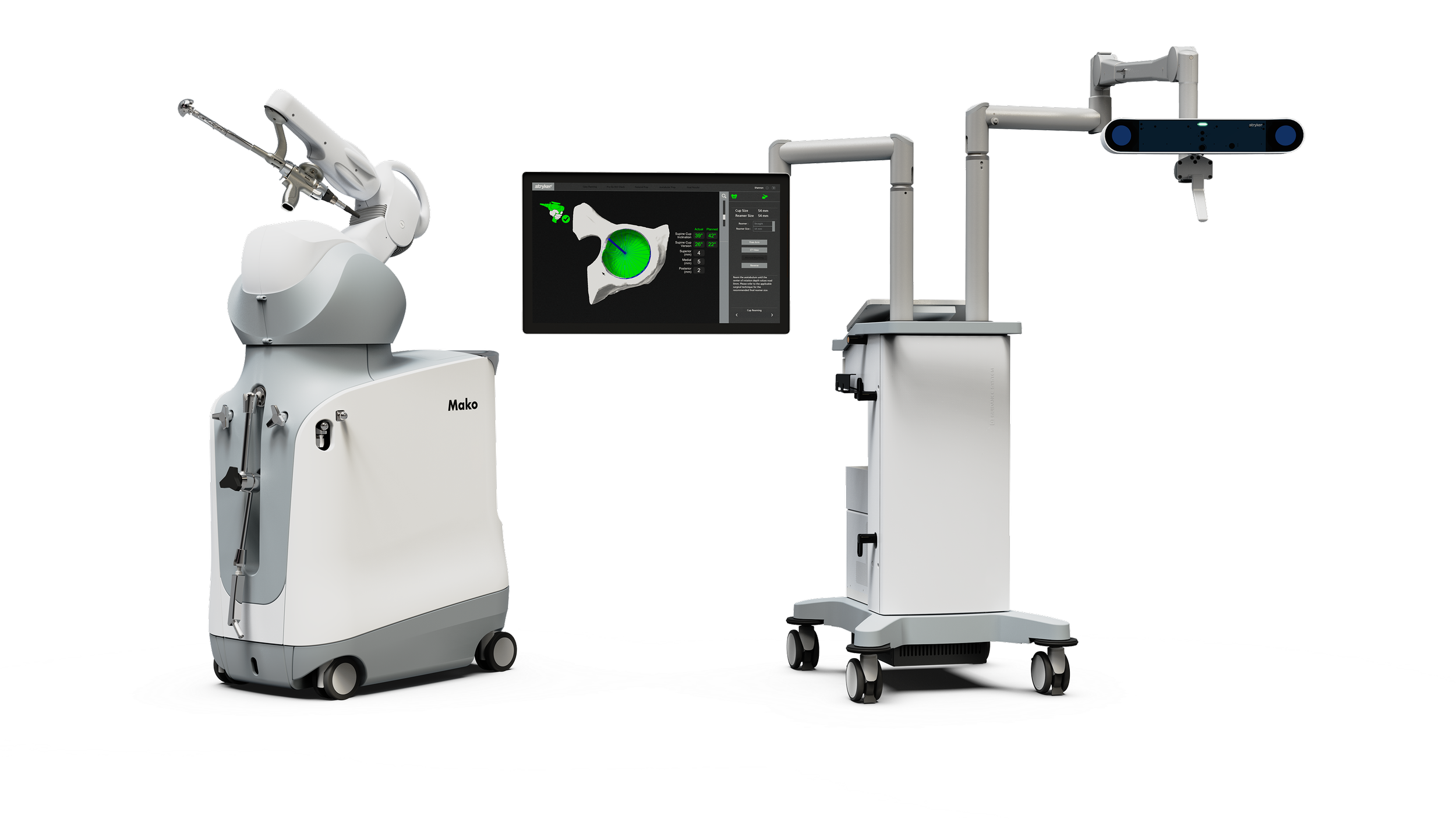What is Robotic Surgery?
Joint replacement surgery has been a highly successful treatment for arthritis for many decades. Over time, we’ve learned that several factors contribute to a successful and long-lasting joint replacement. These include the materials used in the implant and how well the implant bonds to the bone. Advances in implant technology have been significant, but the most critical factor in preventing your joint replacement from loosening, wearing out, or displacing remains the precise positioning of the implant components. This positioning is entirely dependent on the surgeon.
Despite experience and training, studies consistently show that even skilled surgeons can have variability in the placement of joint prostheses and the bone cuts made during surgery. Robotic surgery with computer guidance has been developed to increase the precision of bone preparation and implant positioning, ensuring the components are placed exactly where they should be for optimal function and longevity.
What Does the Evidence Say?
Robotic surgery has demonstrated safety and improved precision in numerous studies, particularly from the USA where it has been in use longer. Robotics have improved performance in many industries, including other areas of medicine beyond orthopaedics.
In Australia, the National Joint Registry tracks joint replacement outcomes. Although robotic joint replacements are a newer technology here and long-term data is still being collected, the available short-term results are very encouraging and support the benefits of this approach.
How Does Robotic Surgery Work?
The process begins with a CT scan of the joint to be replaced. Unlike traditional X-rays, CT scans provide highly accurate 3D models of your joint, allowing detailed preoperative planning for the implant size and placement.
During surgery, specific anatomical landmarks are registered so the robot’s computer can match the planned procedure to your anatomy. Before any bone is cut, the surgeon reviews and confirms the computer-generated plan for implant size, position, and alignment. The robot allows simulated adjustments to achieve the best balance and function of the joint throughout its range of motion.
Traditional joint replacements often make balancing adjustments after the bone has been cut, which can be difficult to reverse. Robotic assistance enables these adjustments beforehand, ensuring optimal joint mechanics before any irreversible steps are taken.
With the plan finalised, the robot guides the surgeon to cut the bone with remarkable precision—often within less than one millimetre of error. This precise bone preparation helps ensure the implant fits perfectly.
Once bone cuts are complete, the implant components are inserted and their position is verified with computer guidance, matching the planned alignment. The remainder of the surgery then proceeds as in a conventional joint replacement.
Benefits of Robotic Surgery
Robotic technology enhances the accuracy of implant placement and joint balancing, which can reduce complications such as dislocation or abnormal wear. For example, studies comparing manual and robotic total hip replacements show a significant improvement in hitting the “target zone” for component positioning with robotics, even in surgeons’ early cases, along with fewer complications.
If you’d like to learn more about robotic joint replacement, please ask your surgeon. You can read more about this here - https://theconversation.com/australias-first-robotic-help-in-a-hip-replacement-operation-57809

